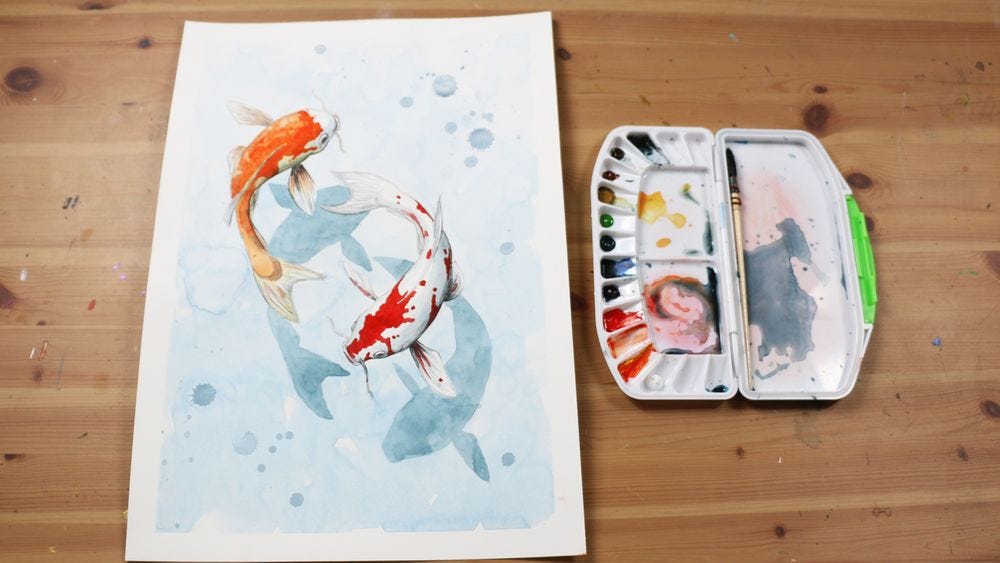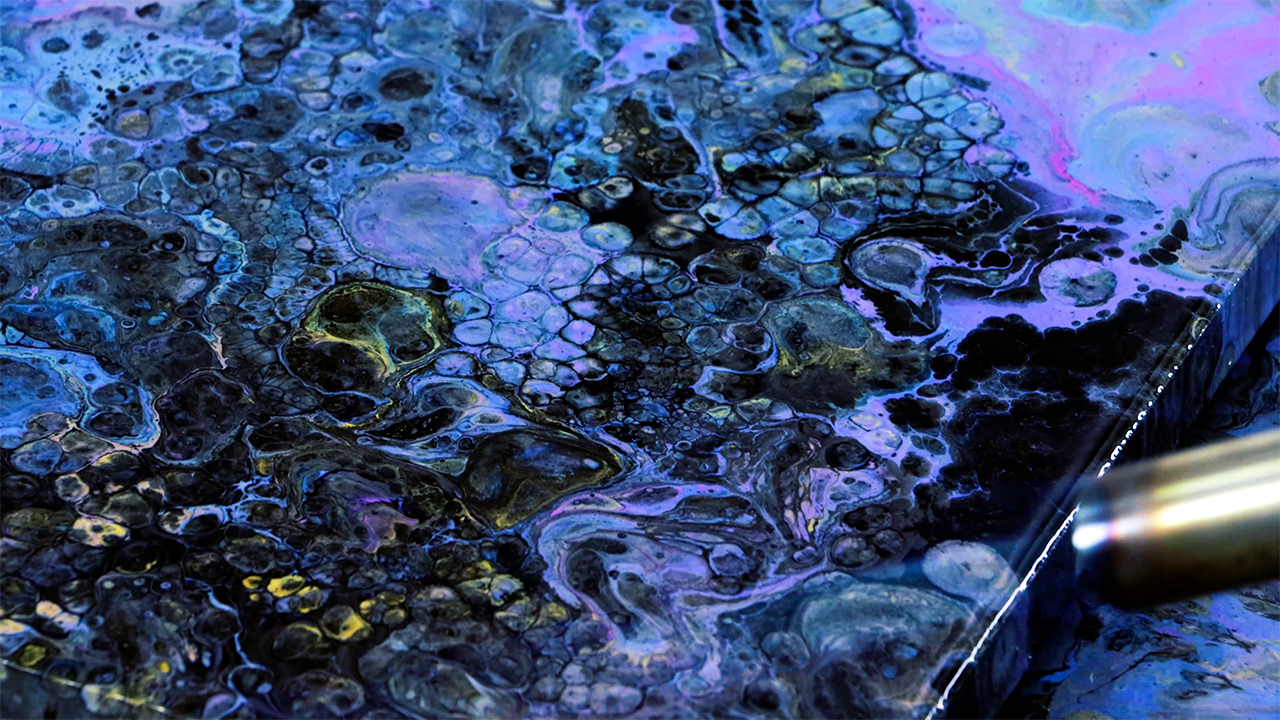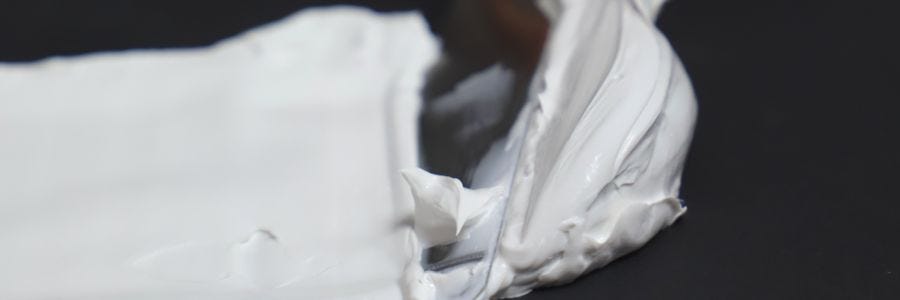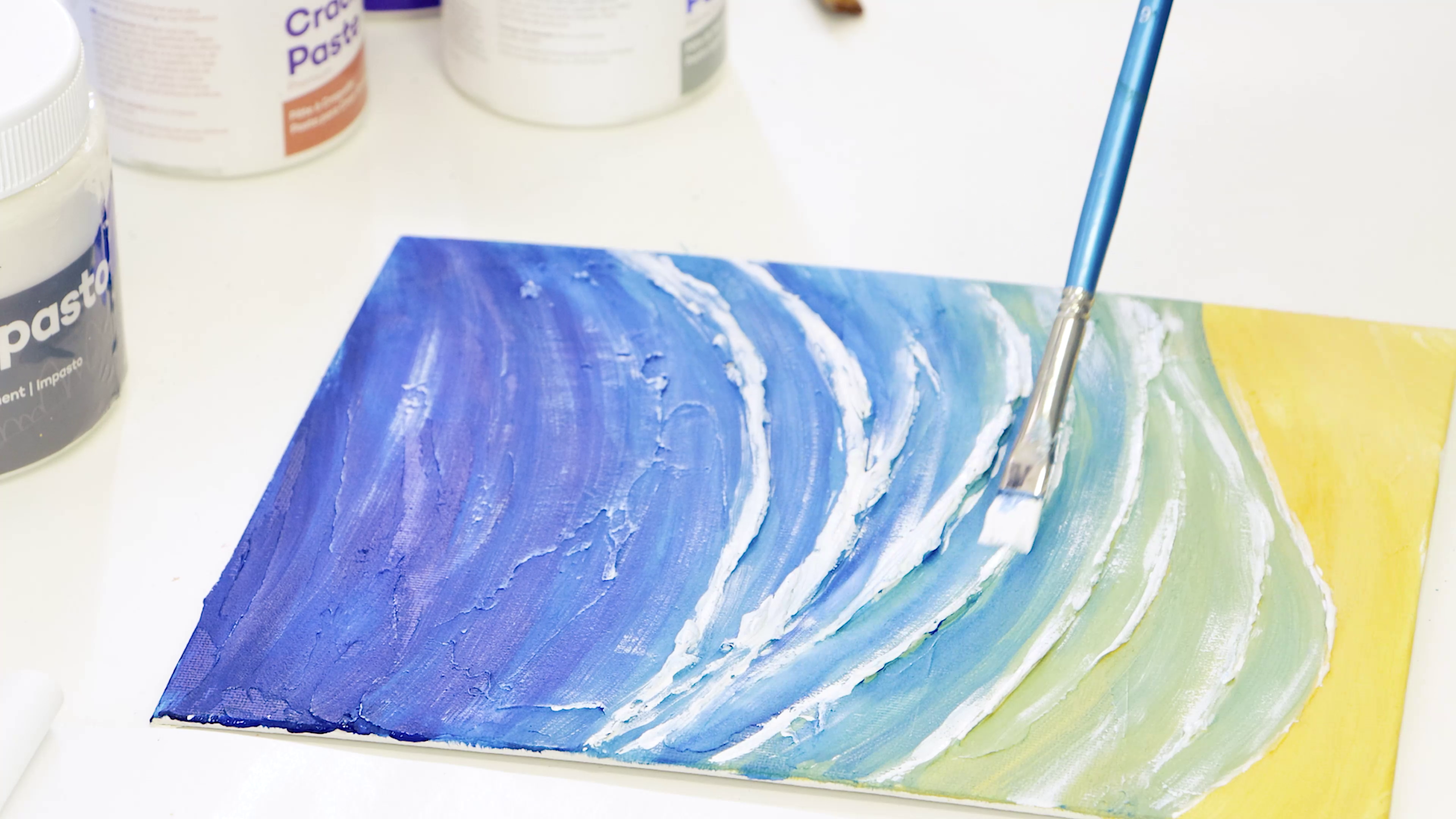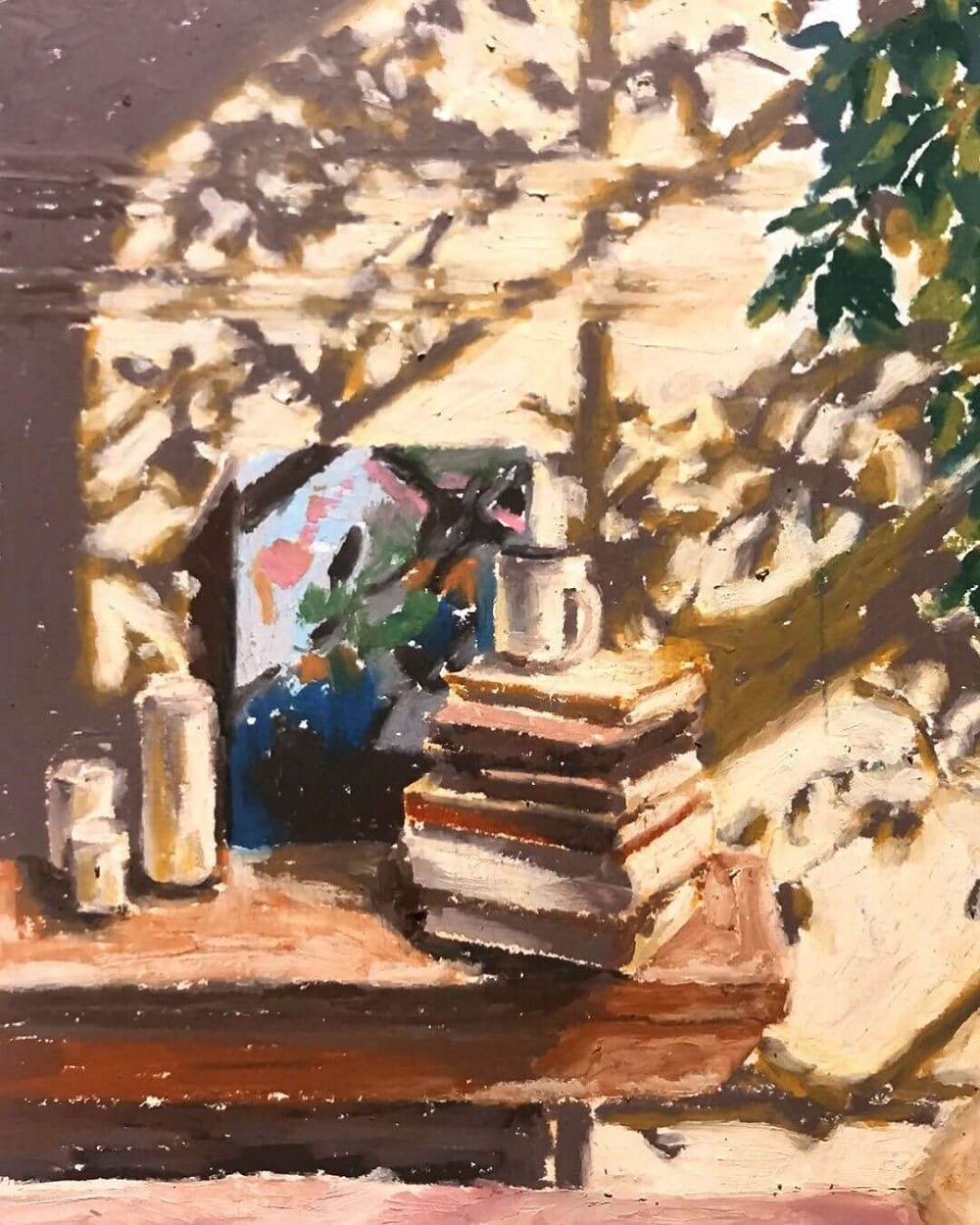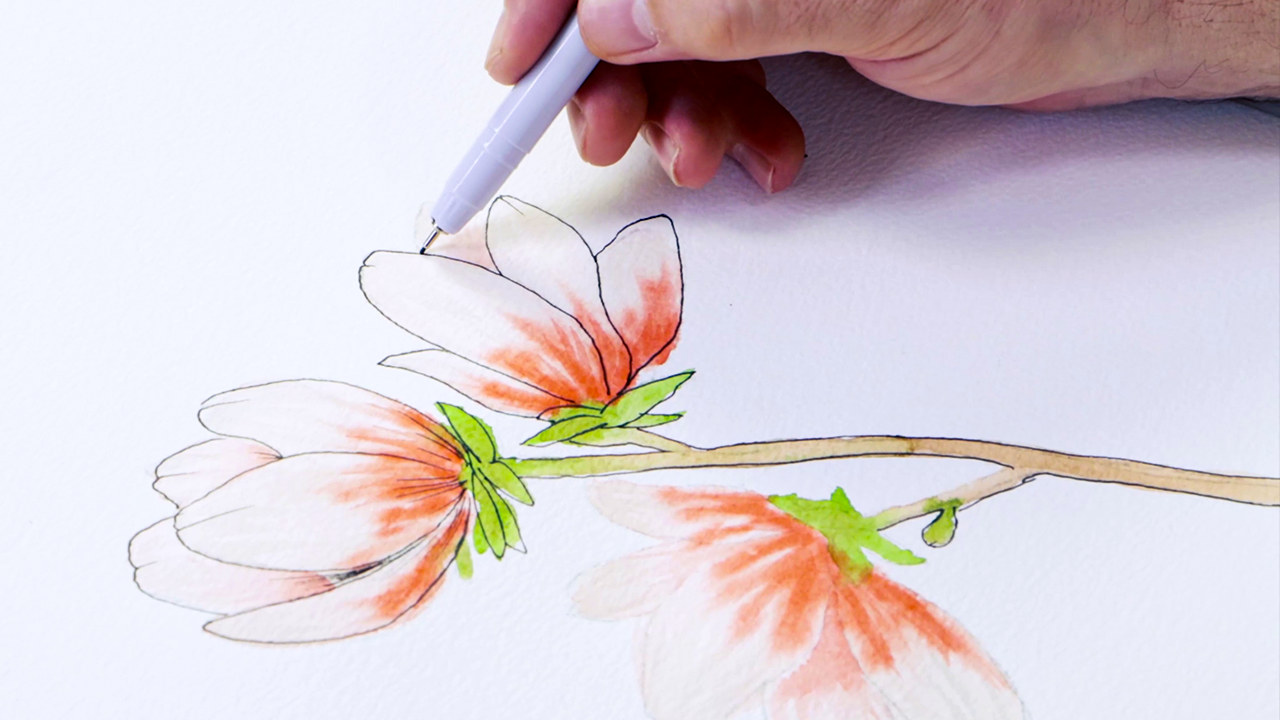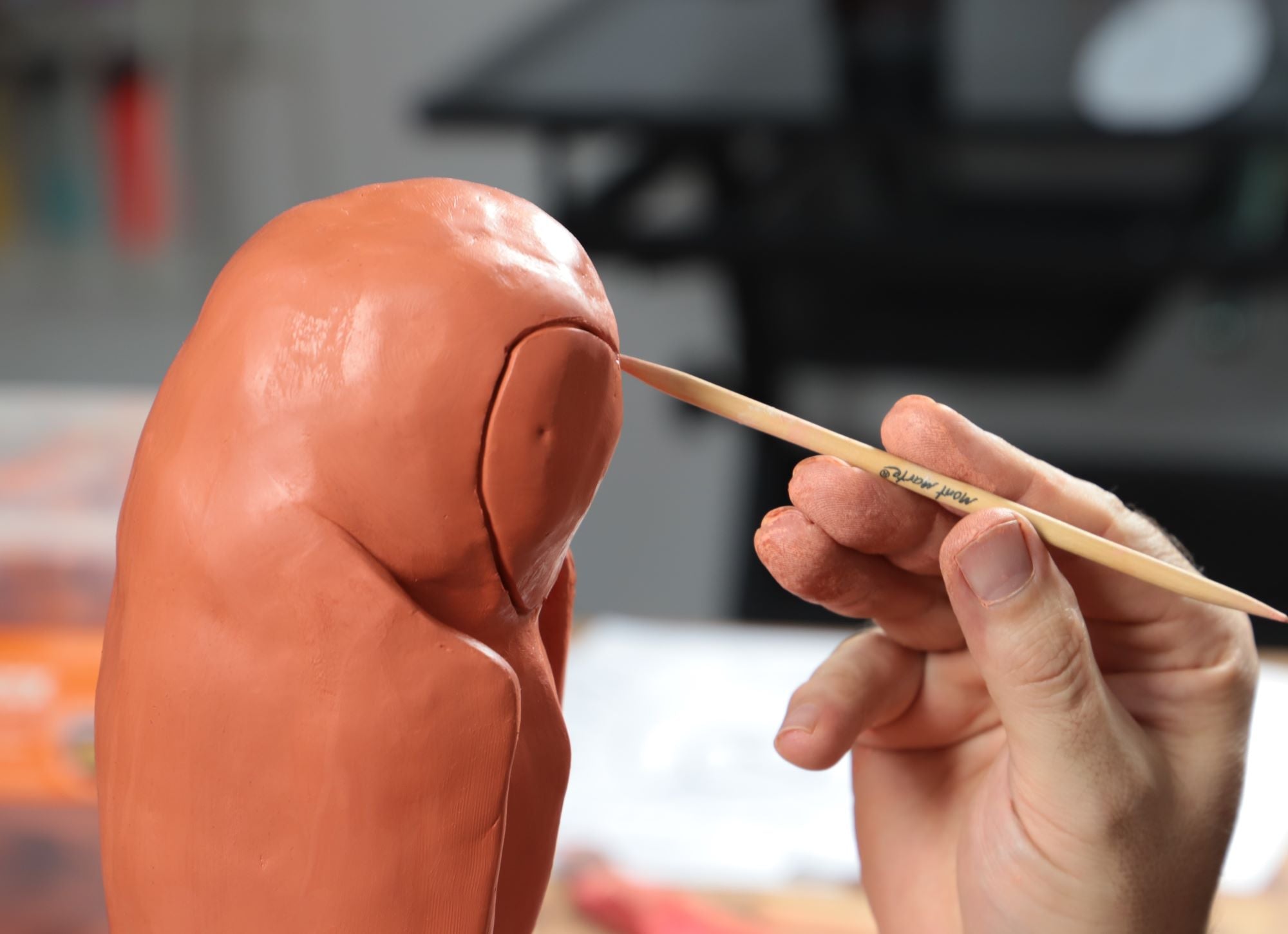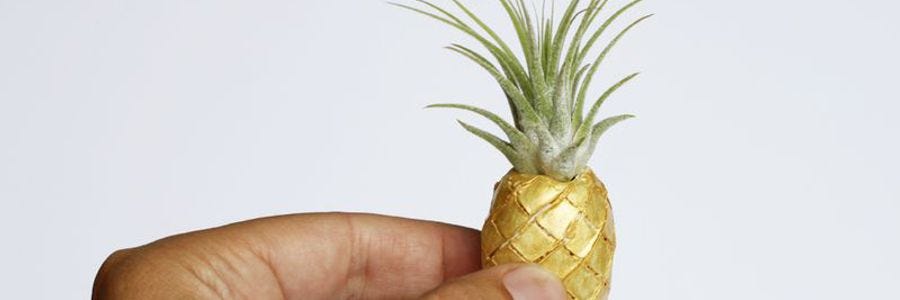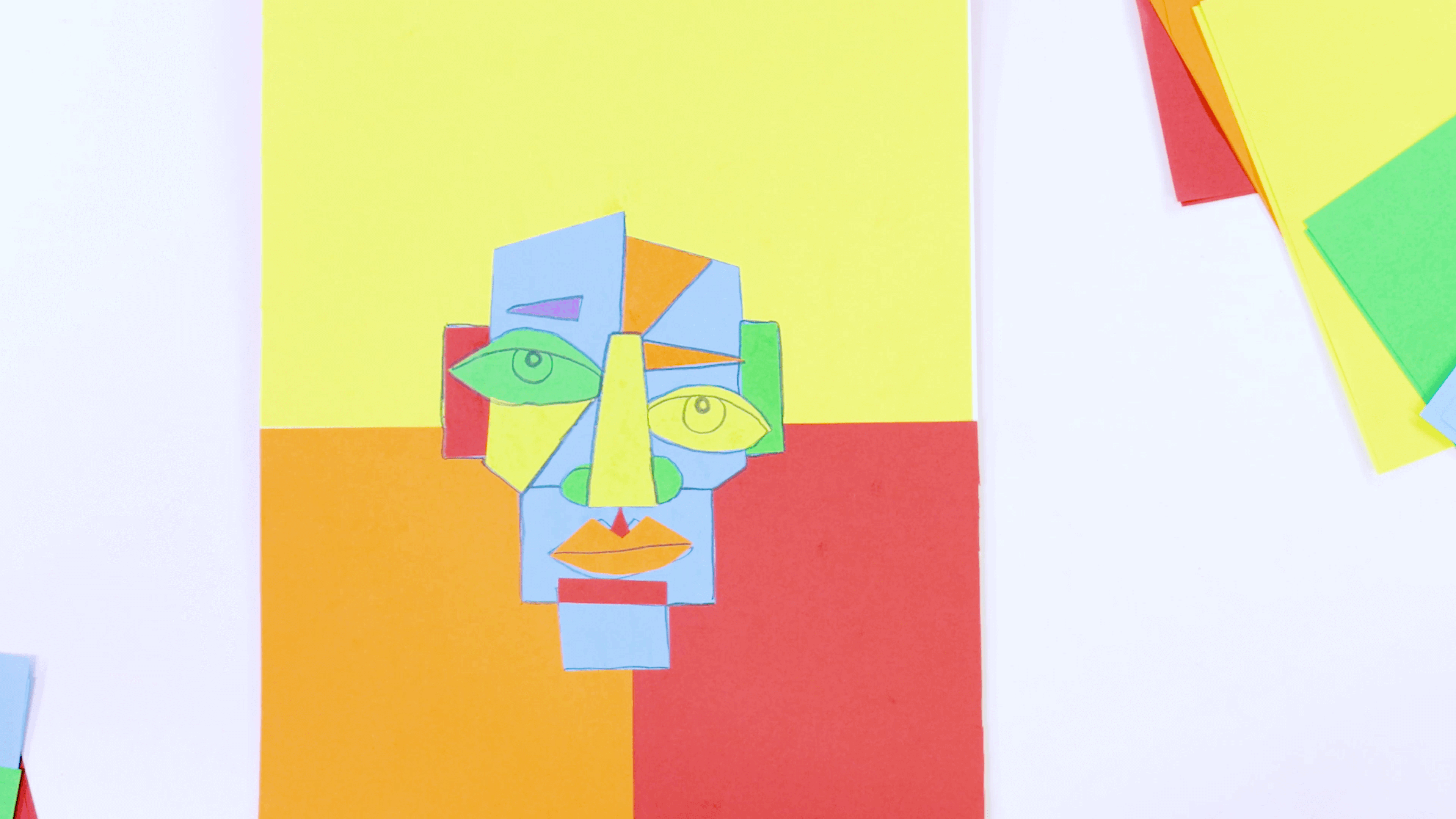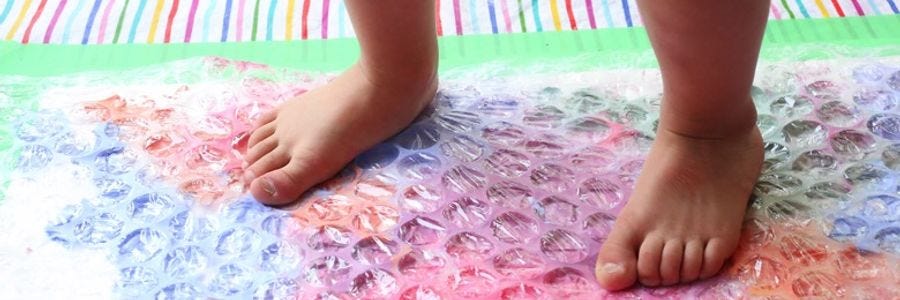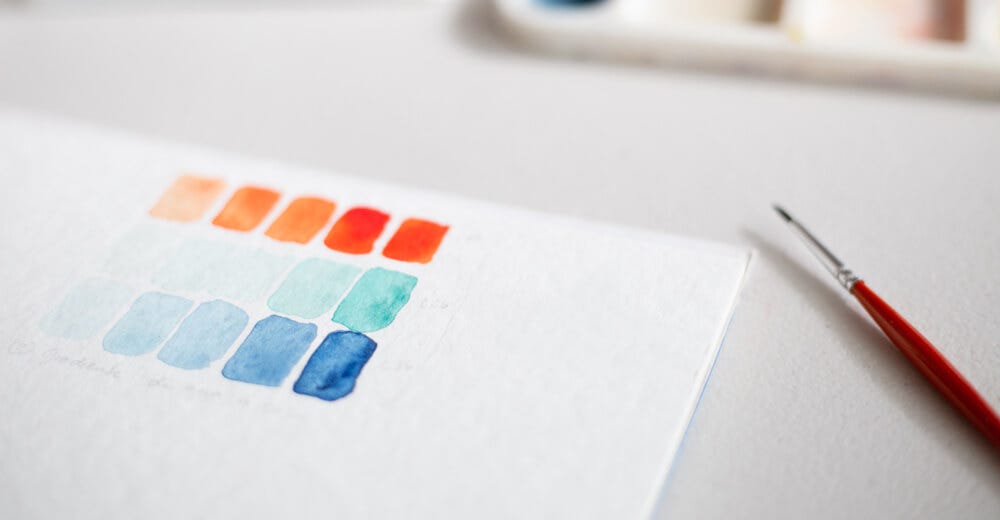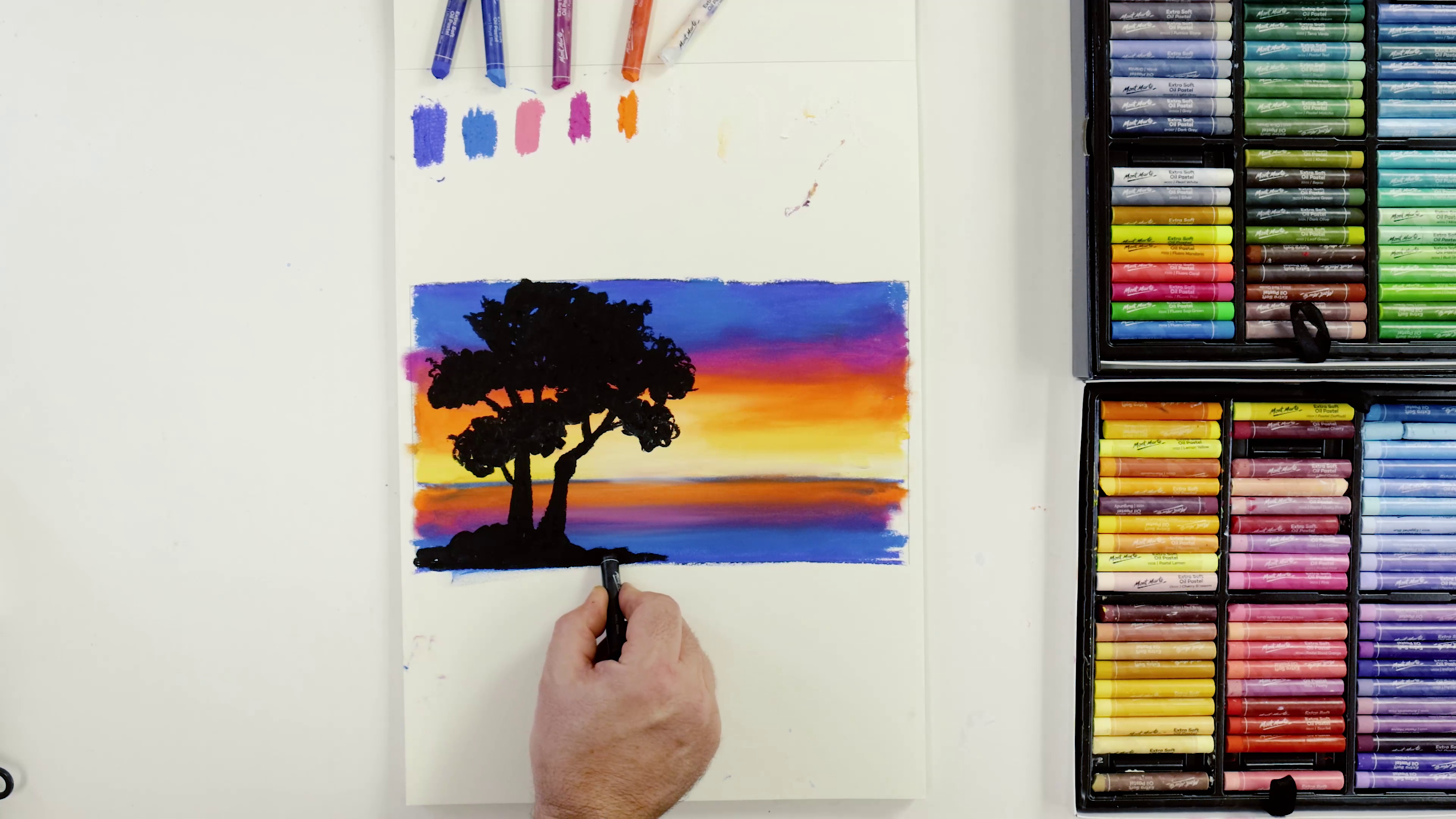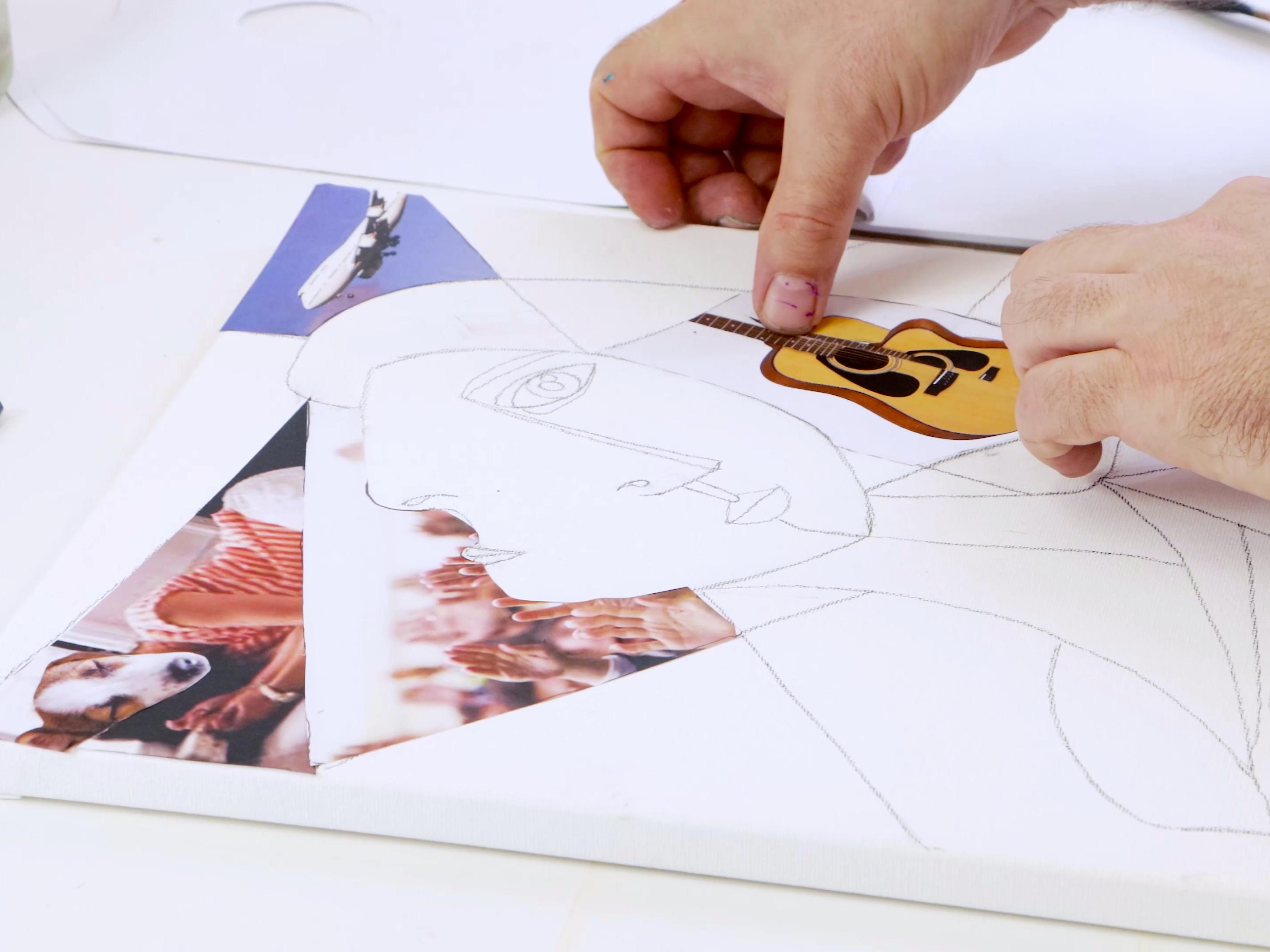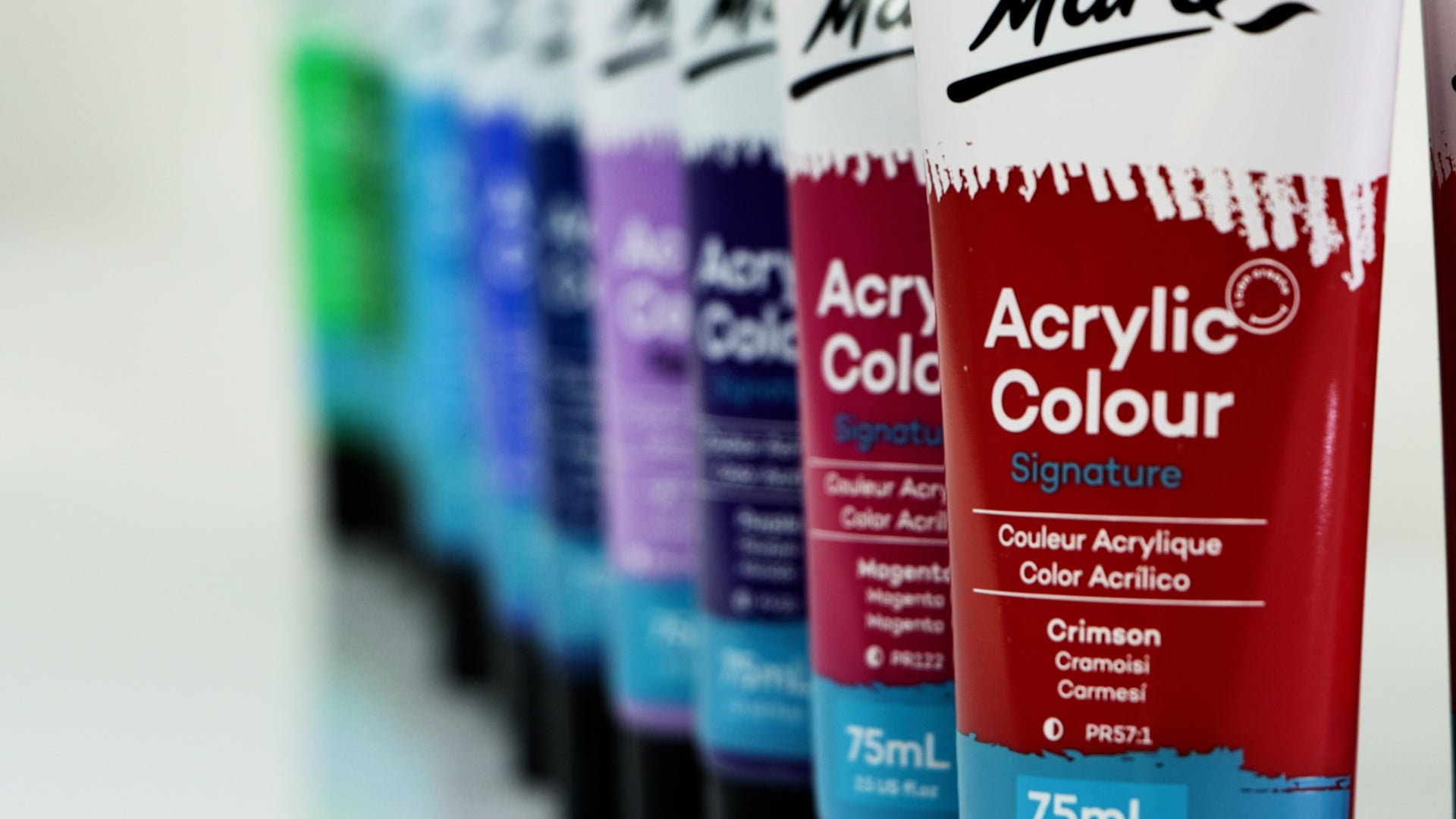Are you thinking about diving into the world of watercolours? We’ve received loads of questions about this medium in our time, so we’ve rounded up the most common things people ask to give you the answers you’ve been looking for. From choosing brushes, to learning the difference between tubes and pans, we hope this article has everything you need!
1. What types of brushes should I use?

The best types of brushes for watercolour painting are made from natural bristles such as squirrel, sable or horse hair. This is because they are soft and also hold watercolour paint better than synthetic bristles.
If you’re an animal lover, the good news is that taklon (synthetic) brushes are still suitable for watercolour painting, so feel free to pick up one of these sets instead. Watercolour brushes come in a range of shapes and sizes, but the one thing you’ll notice is that they often have shorter handles than acrylic or oil brushes. This is because watercolour artworks are usually smaller and tend to be created up close rather than on an easel.
2. Can watercolour brushes be used for other types of paint?

Technically you can use watercolour brushes for acrylic or oil painting, but they’re not ideal. The reason is that they have softer bristles than oil and acrylic brushes because they’re designed to create smooth strokes and hold water better. Since acrylic and oil paints have a thicker consistency, they require stiffer bristles to move the paint around easily and achieve certain techniques. The brush cleaning methods used for oil painting are also a bit harsher which can damage the soft bristles in watercolour brushes. To sum it up, we’d suggest either buying a universal brush set or keeping your watercolour brushes separate.
3. Can watercolour pencils be used dry?

Yes! You can use watercolour pencils dry for drawing or colouring. It’s up to you whether you want to create watercolour effects or leave it as a regular drawing. This is one of the main reasons we love this versatile and colourful medium.
4. What’s the difference between watercolour tubes and pans?

If you’re looking at buying watercolour paints you might be wondering: tubes or pans? While they have their similarities, there are a couple of big differences between the two that might help you decide.
Watercolour tubes
The first one is that watercolour tubes are ready to use straight away, whereas pans need to be activated with water before you use them. This means that the tubes give you the option of painting with a more highly pigmented colour because you don’t need to add as much water from the get-go (although you will still need to mix in water for techniques such as creating a wash).
Watercolour pans
Watercolour pans are more compact which can make them easier to transport and store. However, you can create a watercolour pan set by squeezing some of your watercolour tubes into a palette and letting the paint dry. You can then reactivate them like you would with regular pans by adding water. One last thing to note is that pans aren’t as good for creating large washes or paintings because tubes allow you to mix larger amounts of paint all at once.
5. What type of paper should I use for watercolour?

If you’re planning on creating a watercolour painting, regular paper isn’t going to cut it. You’ll need to use watercolour paper because it’s designed to prevent warping, pilling and bleed-through. So how is it different to regular paper? Watercolour sheets generally have a heavier weight, feature a more textured surface and are more absorbent than regular paper. Professional quality watercolour paper is often made from cotton because it offers minimal shrinkage and bleeding.
6. Are watercolour paints mixable?

Yes, watercolour paints can be mixed together to create new colours. This gives you endless possibilities and allows you to create beautiful blending effects in your work.
7. What are the benefits of using watercolour paints?

Some of the main benefits of using watercolour paints include:
-
Easy to clean up
-
Can be reactivated with water if they dry on your palette
-
Create beautiful transparent effects
-
Portable
-
Relatively inexpensive
-
Can be used by children because they’re easy to clean up
-
Great for mixed media artworks
8. What’s the difference between watercolour and gouache?

Gouache is often referred to as an opaque watercolour. The main difference between the two is that gouache contains a white pigment which means you can’t see through it like watercolour paints. Although they differ in transparency, gouache and watercolour paints are quite similar. They’re both made up of pigment and a water-soluble binder that allows the paint to be reactivated and altered with water after it dries. This makes them super versatile and easy to use.
9. Why are my paints going muddy?

Creating muddy paints is a watercolour issue that a lot of people face. This can be super frustrating and disappointing, especially if you’ve nearly finished your painting! Below are some common reasons watercolour paints go muddy and quick solutions to help you out if you’re grappling with this issue.
Mixing too many colours together
Another reason watercolour paints go muddy is when too many colours are mixed together. So keep it simple and only mix a few colours together to help make sure they stay clean.
Painting on damp paper
The most common reason watercolour paints go muddy is when you try to paint on damp paper. A good rule of thumb to avoid making mud is to only paint on dry or wet paper (not damp). This will also help to prevent paper pilling which is equally as frustrating.
Murky water jar
And last but not least, change your water regularly so that it doesn’t contaminate and muddy your paints.
10. How do I use a water brush?

A water brush is a great tool to have when you’re painting or drawing with watercolours. They provide a constant stream of water so that you don’t need to keep dipping your brush in water! To use our water brushes, simply unscrew the top section and fill the barrel with water before tightly screwing back together. When you’re ready to paint, hold it like a pen and apply slight pressure to the barrel to start the flow of water to the brush. You can also fill these brushes with watercolour paint, which is particularly handy if you aren’t using many colours for your painting.
Hungry for some more tips? Head over to our watercolour hacks article to check out our top tricks and handy hints.
We’d love to see what you’re creating, so tag us on Instagram or Facebook using #montmarteart to share your work with us!


